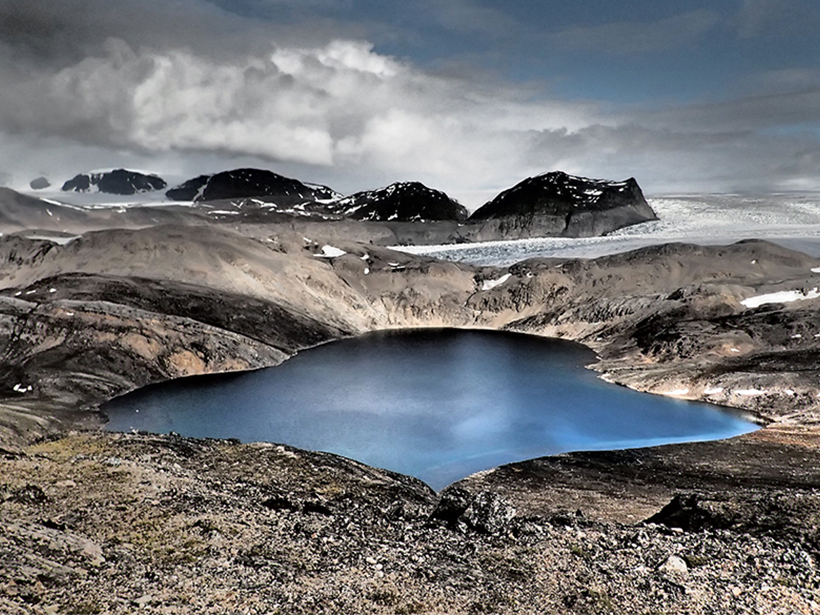A desire for a full understanding of the climate dynamics driven by natural processes versus human activities motivates much of the research on analyzing observations of climate and ocean changes. Comprehensive instrumental climate databases with high spatial and temporal resolution have been available on the global scale since the 1970s, but few time series cover more than a century. Proxy data (e.g., sediment, ice cores, and tree rings) provide information about events in the distant past. However, linking the instrumental records of climate and the paleoproxy time series remains a challenge.
Climatologists can use instruments to observe a long-term tendency (multidecadal to secular); however, because of the limited timescale covered, they are unable to draw conclusions on the driving mechanisms. Our “paleo–time series” workshop addressed this issue by discussing how the paleoclimatological community can help in understanding instrumentally observed long-term tendencies.
Improvement in the time resolution of paleodata and spatial distribution of the paleo–time series is necessary, especially in high latitudes and in the ocean realm.
The workshop participants noted that an impressive number of climate-related time series are now available in various databases, notably those of the National Oceanic and Atmospheric Administration. Uncertainties in the quantitative interpretation of the climate signal from proxies pose a challenge to integrating proxy data with these instrumental time series. In addition, the inconsistencies between the time windows of instrumental and paleoclimate data hinder a proper combination of the two types of information for developing time series extended into the past.
The participants identified the need to increase the quality of the dating control and to properly integrate the dating uncertainties into the compilation, factors that are still overlooked despite valuable efforts in developing age-modeling software. In addition, an improvement in the time resolution of paleodata and spatial distribution of the paleo–time series is necessary. This is especially true at high latitudes and in the ocean realm, where proxy data are very rare and still missing in most available compilations, even the most recent ones.
Another important question that participants raised concerned how to process the time series. Statistical techniques, together with times series analysis methods such as continuous wavelet transform, are useful for comparisons of the high-frequency variability in both instrumental and proxy records. These methods could also be applied for documenting the low-frequency variability captured in the paleorecords.
Participants developed easily available and easy-to-use tools and tutorials to help the data community build age models; however, their application is not straightforward.
In this context, the participants developed easily available and easy-to-use tools and tutorials to help the data community build age models that would fit prerequisites for proper intercomparison and compilations and also to analyze and interpret the signal contained in the paleorecords. However, their application is not straightforward because of the number of pitfalls in the chronology of the proxy-based time series.
Errors due to age models based on the radiometric approach are often underestimated, and the effect of bioturbations (living organisms disturbing the sedimentary record) or sediment mixing is often neglected. Moreover, the proxy data capture different climate-related signals encompassing distinct time windows, which either smooth or emphasize the noise in the variations. Hence, compiling the proxy records in a meaningful way is a challenge.
Finally, the workshop ended with a call for presentations at the 2017 American Geophysical Union Fall Meeting at a session entitled “Linking Paleoclimatic Information from Natural Archives and Instrumental Data” (Session PP11C). The workshop participants put out a call to the climatological and paleoclimatological communities to work together to improve our understanding of climatological long-term variability.
—Maxime Debret (email: [email protected]) and Marie Nicolle, Normandy University, University of Rouen, University of Caen, Centre National de la Recherche Scientifique, Rouen, France; and A. de Vernal, Centre de Recherche en Géochimie et Géodynamique (Geotop), Université du Québec à Montréal, Canada
Citation:
Debret, M.,Nicolle, M., and de Vernal, A. (2018), Linking instrumental and proxy data climate records, Eos, 99, https://doi.org/10.1029/2018EO089835. Published on 12 January 2018.
Text © 2018. The authors. CC BY 3.0
Except where otherwise noted, images are subject to copyright. Any reuse without express permission from the copyright owner is prohibited.

